These Adorable Bunny Breeds Make the Best Pets
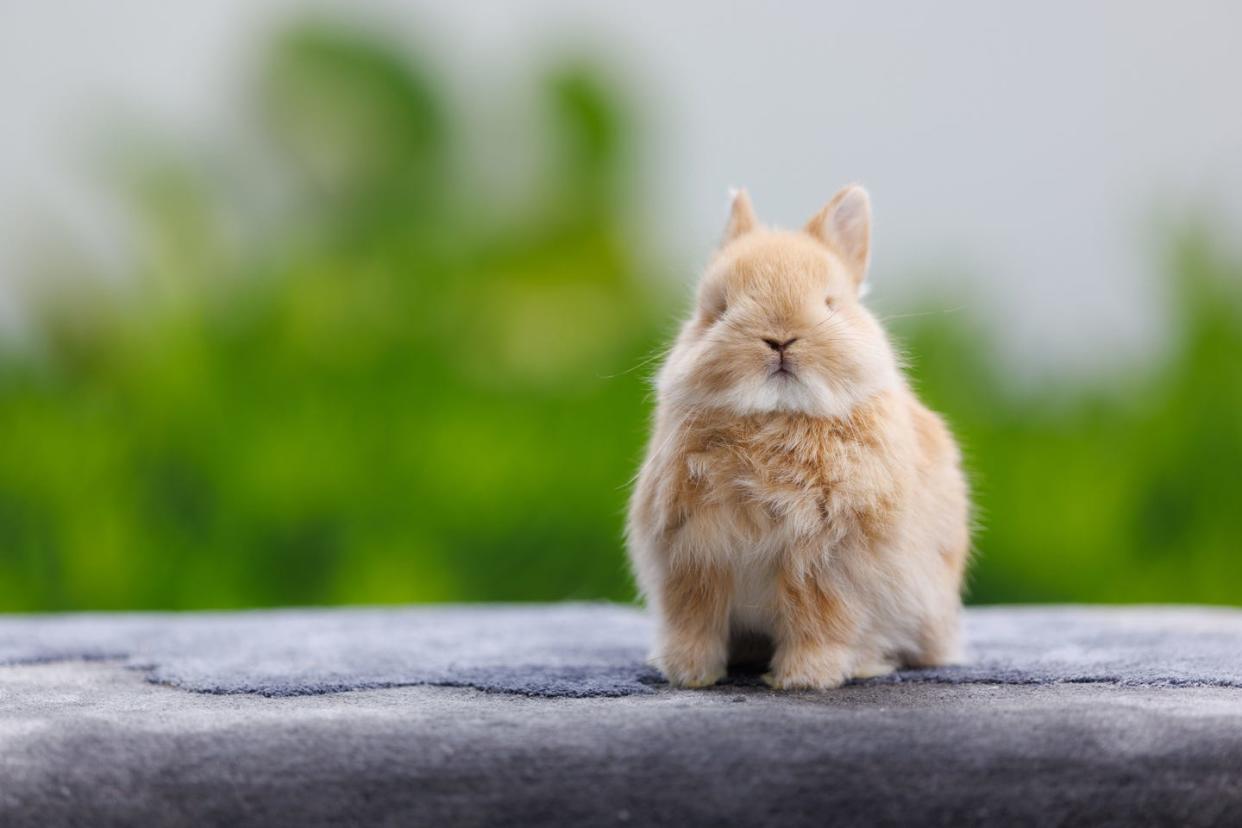
If you're looking to add a unique but loving critter to your home, different than the typical dog or cat, you're definitely going to want to check out our rundown of the 30 best bunny breeds below. Most domestic rabbits are extremely low maintenance—though some with longer fur do require regular grooming. But unlike man's best friend, they don't need to be walked (many may be litter-trained!) and they can be cuddlier than kitties, as Dr. Kim Meijer, a veterinarian on JustAnswer who specializes in rabbits and other exotic animal pets, says.
"Domesticated rabbits make great pets, especially once we are aware of what makes them special when compared to dogs and cats," Dr. Meijer says. "Rabbits are very smart, they are easily house-trained and love working together with their owner for treats. They often develop close bonds with their humans. Usually, male rabbits will bond with their humans a bit easier compared to female rabbits. My favorite trick to teach a rabbit is a high five, they can also learn to come when called, and they are often very good at agility exercises."
But the world is full of domestic bunny breeds—the American Rabbit Breeders Association (ARBA) currently recognizes more than 50!—so it's easy to get a bit overwhelmed when you're trying to zero in on the best rabbit for your household. To make the search a little easier for you, we've put together a board of bunny experts, including Dr. Meijer, DVM Jessica Thompson, and Dr. Kathryn Dench, veterinarian and chief scientific advisor for Paw Origins. They've weighed in on 30 floofy fellows, both common and a bit more exotic, that you might want to consider adopting. They're so adorable you don't need to wait til Easter to bring one home!
More Fun Pets to Consider Adopting:
Blanc de Hotot
First bred in Hotot-en-Auge, in the Normandy region of France, the blanc de Hotot can be traced back to the early 19th century. This beautiful white bunny with what Dr. Thompson calls "distinctive 'eyeliner' markings," is also available in a smaller, dwarf size. "They are sweet, docile and great for children," Dr. Thompson adds. "They're one of my favorite breeds."
Weighs 8-11 pounds
White coat with black eye bands
Lustrous fur
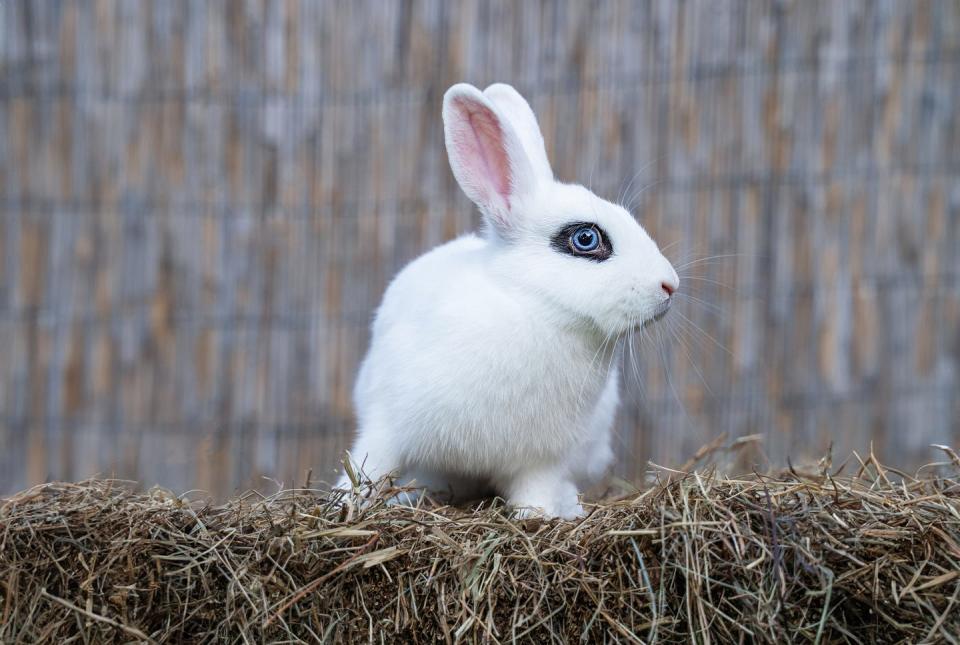
Flemish Giant
Dating as far back as the early 1500s, the Flemish Giant is thought to have originated in Flanders, Belgium. Nicknamed the "Gentle Giant," they are "the largest breed of rabbit," says Dr. Meijer. "They can weigh up to nearly 50 pounds. However, most often they are about 15 pounds on average, which can be a consideration for someone who doesn’t live in a large space. They are very friendly and love to cuddle!"
Usually weighs around 15 pounds
Coat available in a wide variety of colors
First came to U.S. in early 1890s
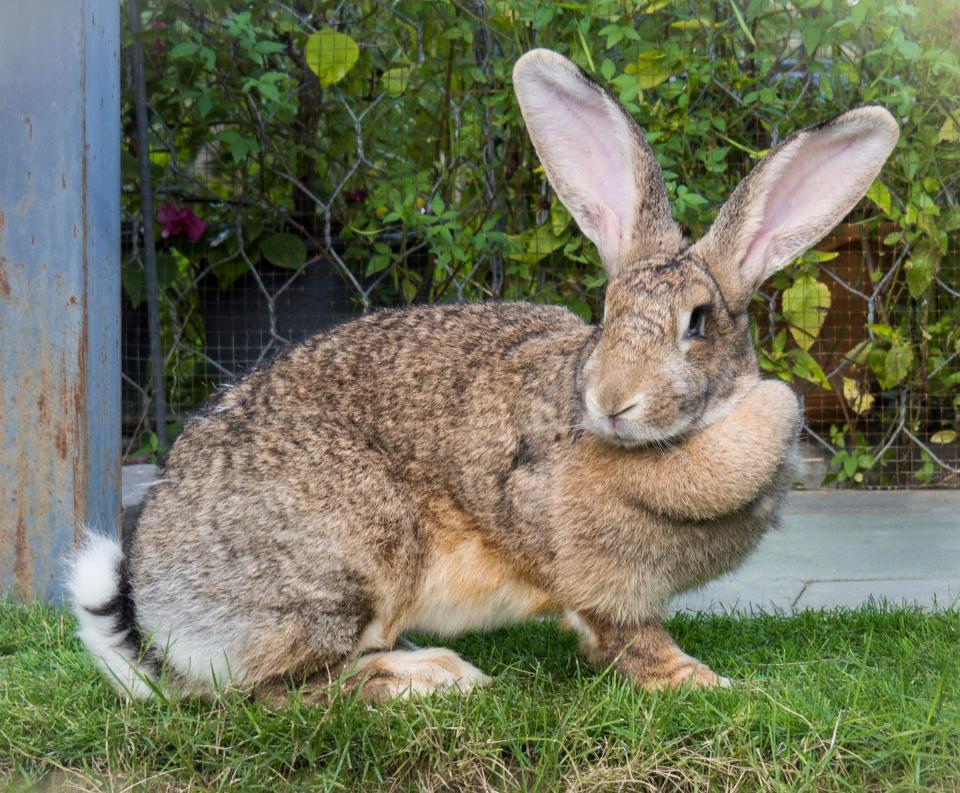
Holland Lop
A Dutch breed developed in the mid-20th century, the Holland lop is today one of the five most popular breeds recognized by the ARBA. "They are miniature rabbits, (weighing) 2 to 4 pounds on average," says Dr. Meijer. "Their ears are lopped, which means that they hang down instead of standing up. If you live in a smaller space, then this cute breed might be ideal for you."
Weighs 2-4 pounds
Coat available in a wide variety of colors
Compact body with a large head
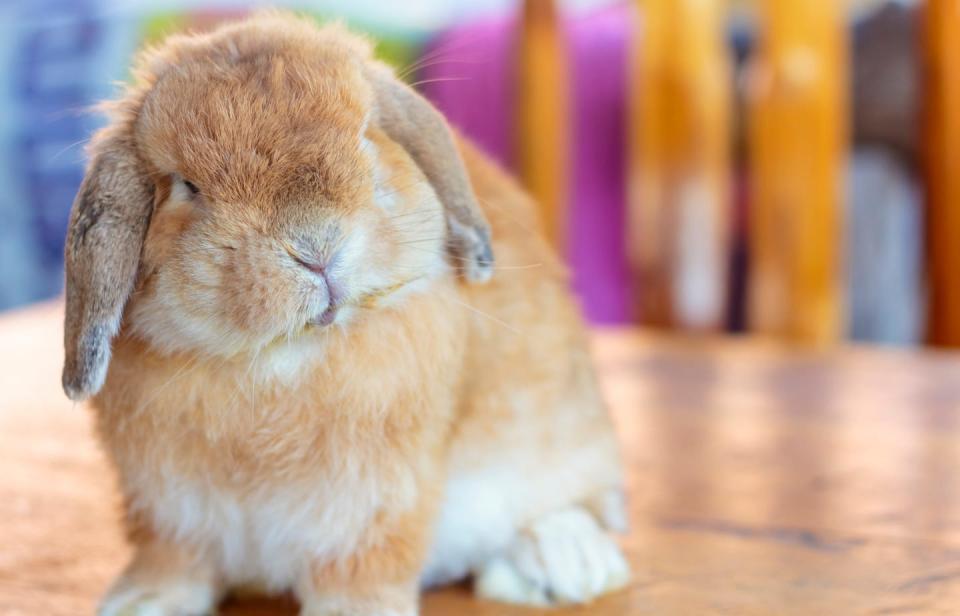
English Spot
Selective breeding accounts for the English spot's charmingly speckled appearance, which typically includes eye circles, cheek spots and a butterfly nose marking. Developed in England in the 1800s, this is a fully arched, medium-sized breed, with a pleasantly mild, even-keeled temperament. But though they were bred to be pets and show rabbits, they aren't typically fond of being picked up.
Weighs 5 to 8 pounds
White coat with black, blue, chocolate, gold, gray, lilac, or tortoise
Arched, hare-like body
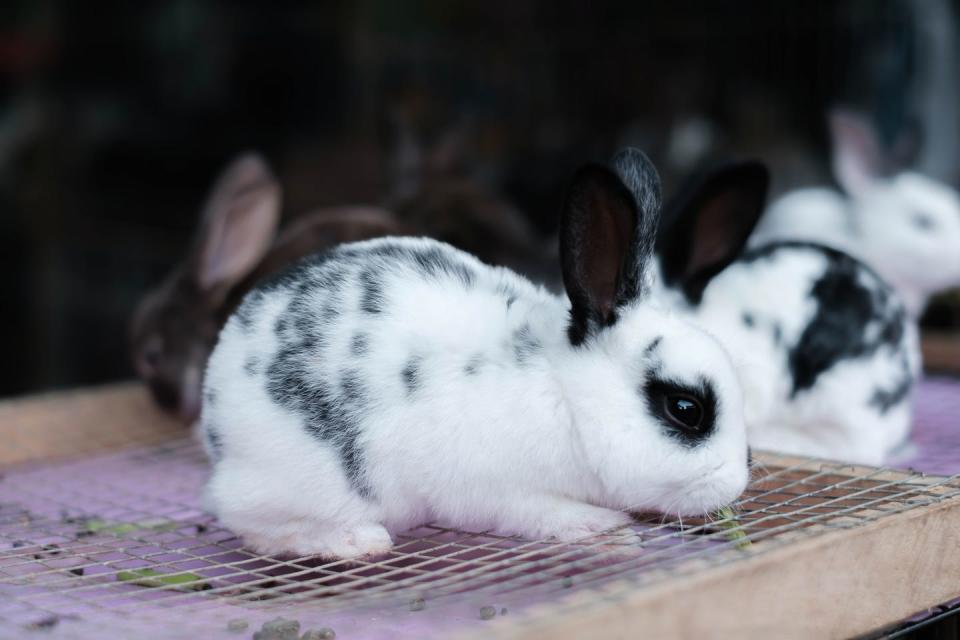
Dutch
Despite his name, this distinctive-looking, bi-color bunny hails from England, where he can be traced back to the 1830s. A smaller breed, but plenty spritely, Dutch rabbits are "known for their striking color patterns and friendly nature," says Dr. Dench. "They are one of the most popular pet breeds."
Weighs 3.5-5.5 pounds
White coat with black, blue, chinchilla, chocolate, gray, lilac, steel or tortoise
Well-rounded body
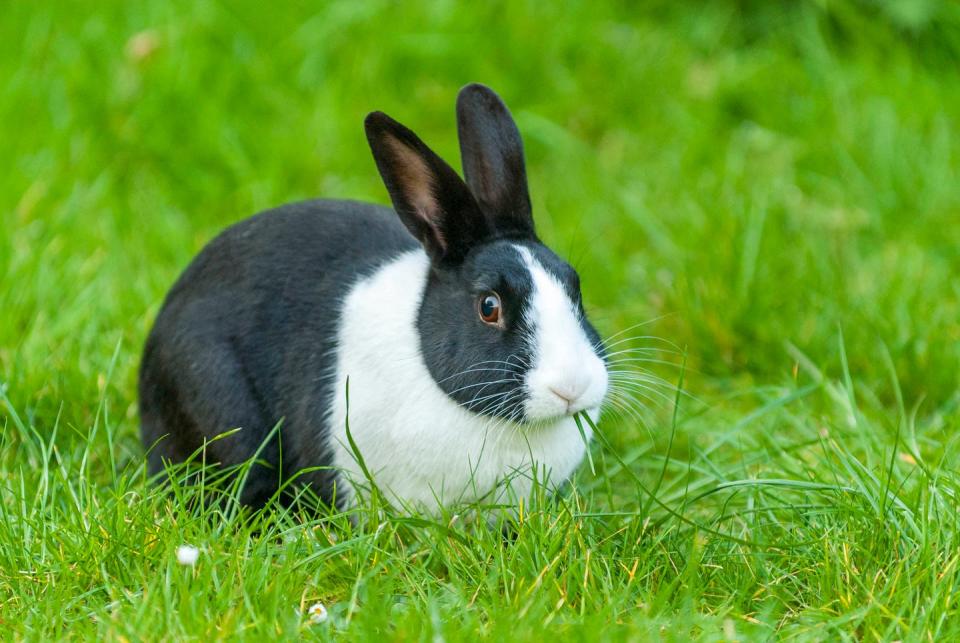
English Lop
Developed, like the Hotot, in the early years of the 1800s, the English lop was a favorite pet of the Victorians. According to Dr. Thompson, they're famous for their "calm nature" and long ears—the longest of any bunny breed! "They make great pets for families with children and require little grooming," she adds.
Weighs 9-12 pounds
Coat is short and stiff
Very long ears
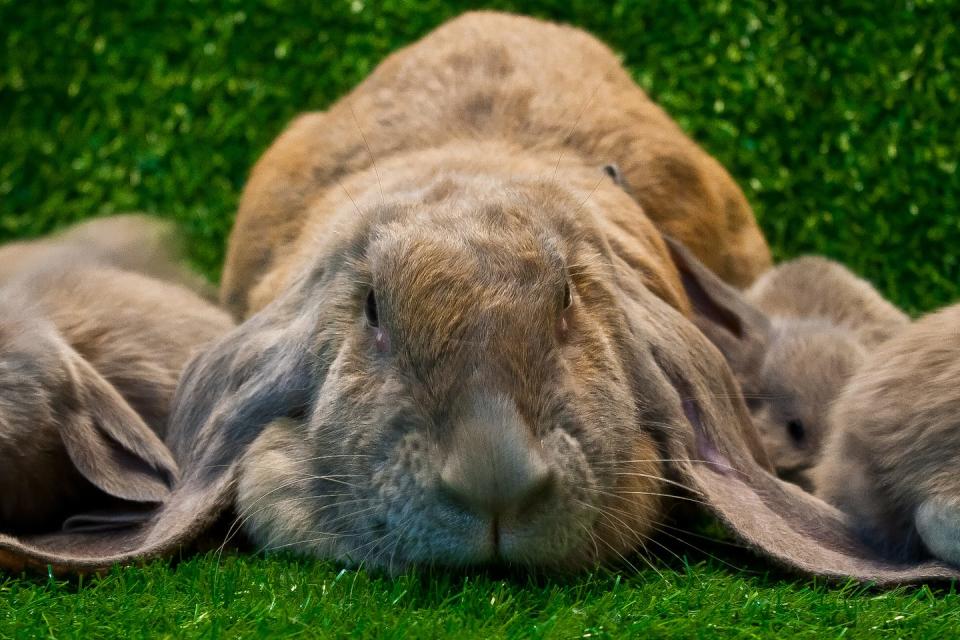
New Zealand
According to Dr. Meijer, despite their name New Zealand rabbits originate from California. They are said to be affectionate and gentle, though, as Dr. Meijer notes, "White New Zealand rabbits have albinism, which means a lack of melanin. Their eyes are ruby pink. This makes them more sensitive to light, so if you live in a bright, sunny location, this is something to keep in mind."
Weighs 9-12 pounds
White, red, or black coat
Broad, muscular body
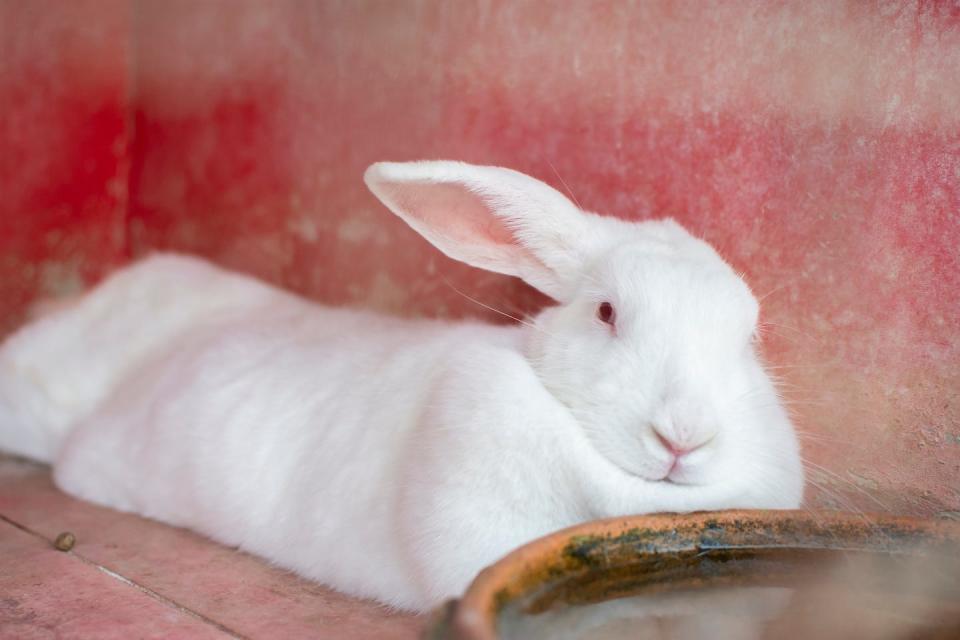
Belgian Hare
Considered a threatened breed, the rare Belgian hare shows its wild rabbit heritage in its lithe, long, muscular body and arched back. One of the oldest breeds found in the United States, with roots going back to the 1880s, this beautiful bunny was actually developed more than a century earlier in Eastern Europe. Active, energetic and intelligent, they also tend to be high-strung and may make better outdoor pets than indoor ones.
Weighs 6 to 9.5 pounds
Red rufus coat with black ticking or tan coat with black, blue, chocolate, and lilac with a tan undercoat
Slender body
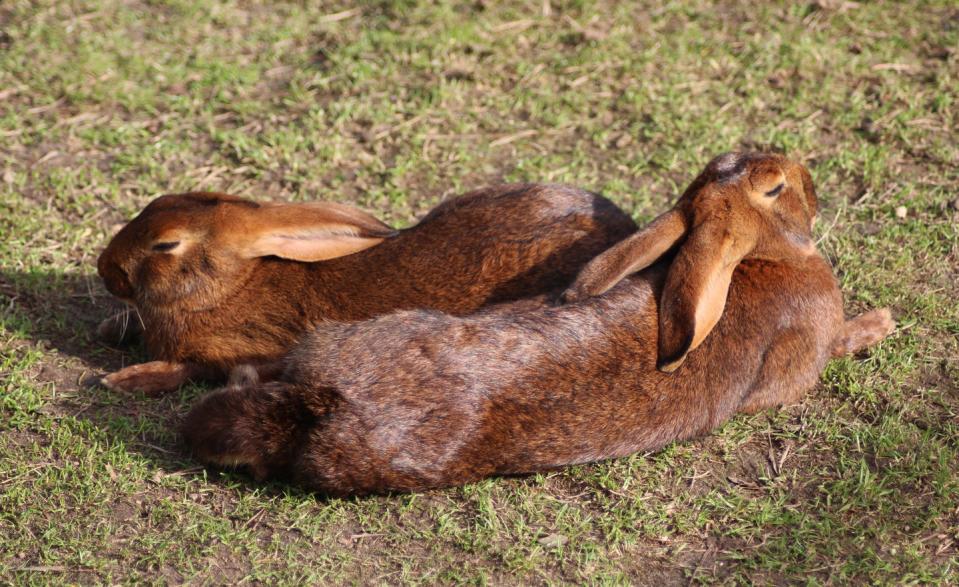
Crème d'Argent
An extremely rare breed, which now is found only in the United States and the U.K., this bunny originated in France in the mid-1800s. They're "known for their friendly, spunky personality," says Dr. Thompson, as well as a creamy white coat with a distinctive orange under-color. With a population numbering less than 1,000, this is the ideal bunny for any family looking for a unique pet.
Weighs 8-11 pounds
Creamy white coat with orange cast
Good breed for beginners
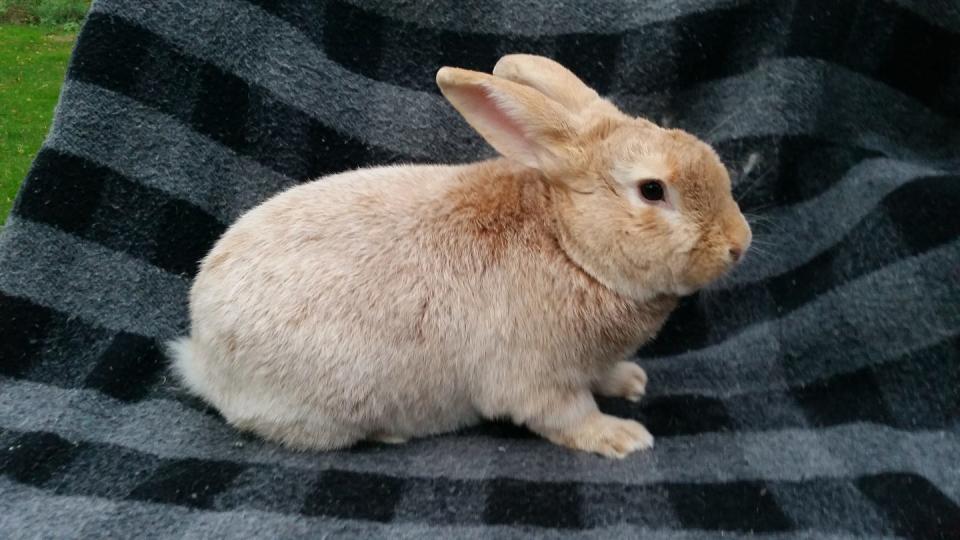
Rex
Dubbed "The King of the Rabbits," the stately rex made his public debut at a Paris rabbit show in 1924. Theses beloved bunnies are most famed for their short, thick and very soft fur, but Dr. Dench notes that they are also "well-regarded for their calm and sociable demeanor, making them excellent pets for families or individuals seeking a rabbit that genuinely enjoys being handled and petted."
Weighs 7.5–10.5 pounds
Coat available in 16 varieties
Arrived in U.S. in 1924
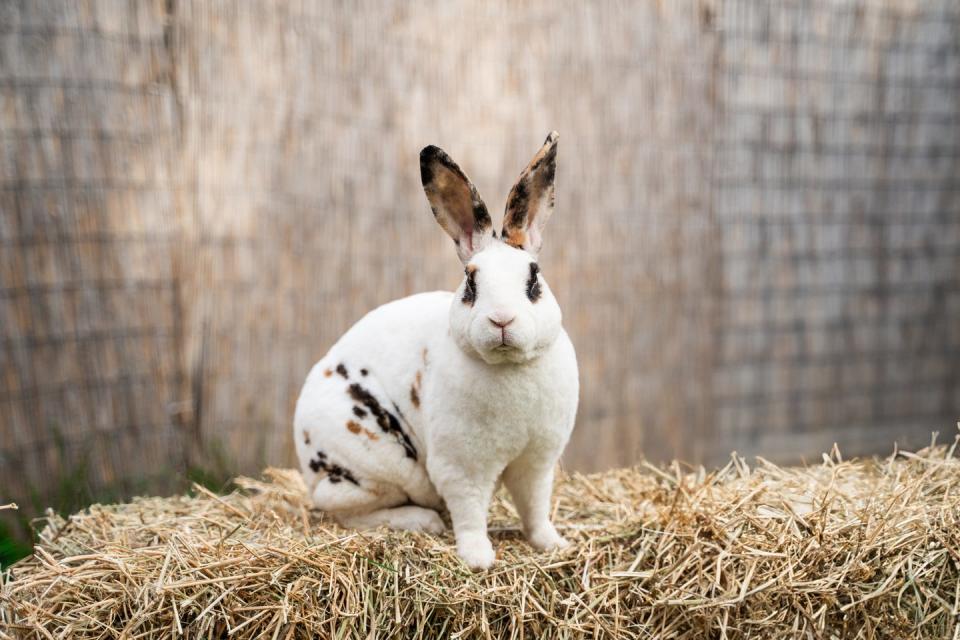
Himalayan
Favored around the globe, where the breed is variously known as the Black Nose Rabbit from China, the Egyptian, and the Russian Rabbit, the Himalayan has been fondly nicknamed Himmies here at home. Said to be both ancient and one of the few bunnies not man-made through breeding, this fellow is renowned for his loving and mellow personality. For this reason, he makes an excellent pet for children.
Weighs 2.5 to 4.5 pounds
Typically white coat with black, blue, chocolate, and lilac points
Unique cylindrical body
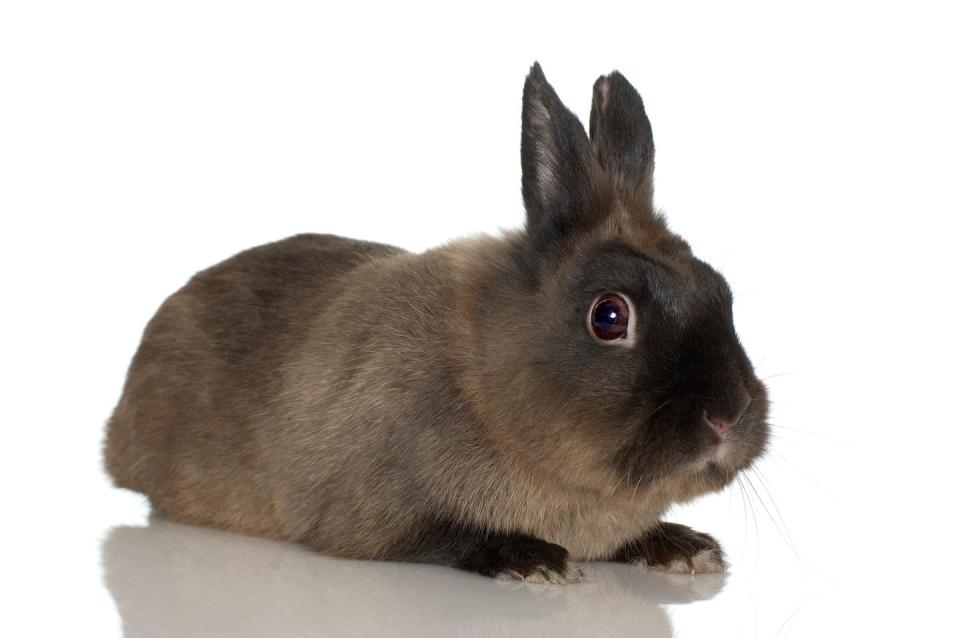
Cinnamon
The result of breeding chinchilla, New Zealand, and checkered giant/Californian rabbits, this beautiful bunny is "a large, hardy breed with a calm temperament, making them ideal pets for children," says Dr. Thompson. Their "short, easy-to-care-for coat" offers a lovely orange under-color with gray ticking on the back and gray coloring on the sides.
Weighs 9-11 pounds
Cinnamon coat
Sweet-natured
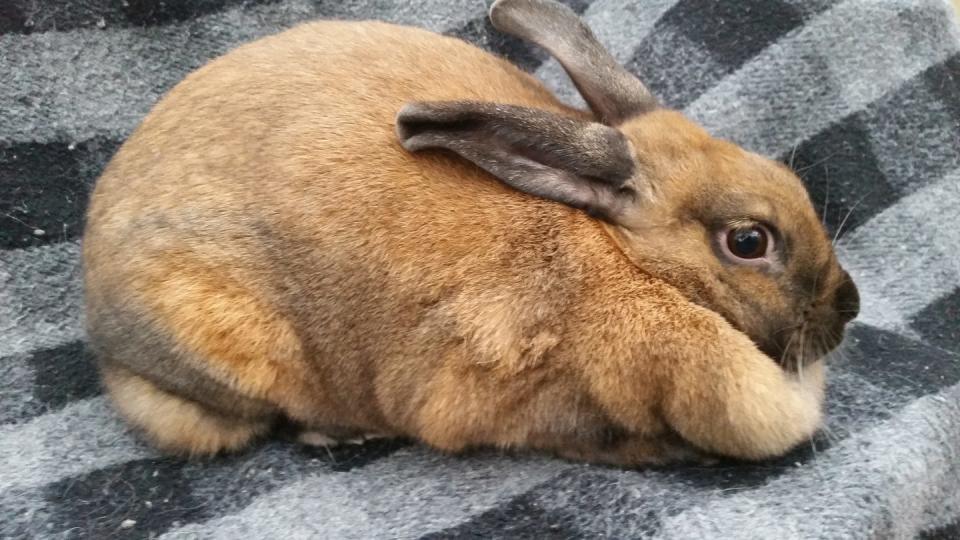
Angora
There are said to be at least 11 breeds of angora rabbits in existence, though only four are recognized by the ARBA. Angoras are distinguished, in part, by their ability to produce soft, silky luxury wool also called angora. "Their coats require a bit more maintenance than your average rabbit, but you can use the wool," says Dr. Meijer. "One of my friends actually knitted a scarf out of wool from her Angora rabbits."
Weighs 3-12 pounds
Coat available in a wide variety of colors
Higher maintenance
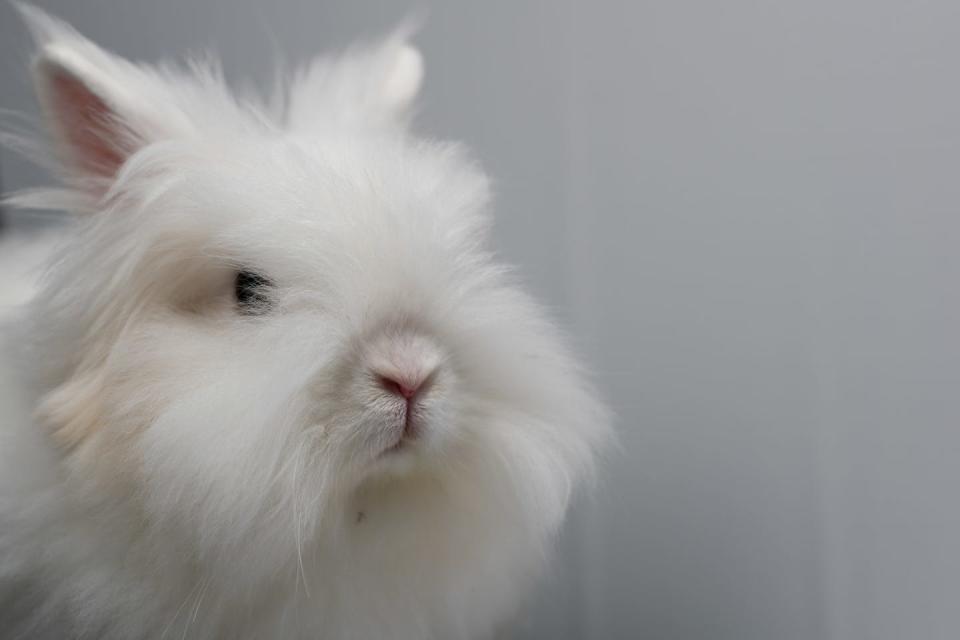
Californian
Developed about a century ago in the state it's named for, the Californian bunny is as chill as a SoCal surfer dude. "Gentle and easy to handle, these rabbits are rarely aggressive and make excellent family pets," says Dr. Thompson. "They're one of the most common breeds of rabbits that we see. They have beautiful white fur with black tips on the nose, tail, and ears."
Weighs 8-10 pounds
White coat with black points
Gentle demeanor
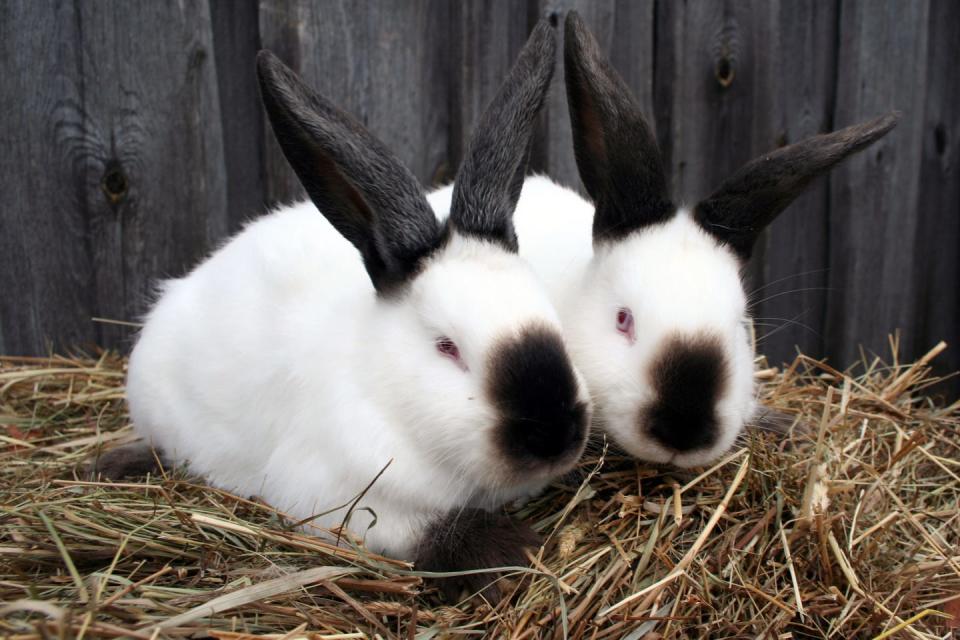
Checkered Giant
Dubbed the giant papillion in Europe where it was developed, the checkered giant has called the U.S. home for more than a century. Also known as "the rabbit beautiful," this is a very big, running bunny that needs a large cage to be happy, although they do well living inside the house with their humans and can be litter trained.
Weighs at least 11 pounds
White coat with defined black or blue markings
Arched body
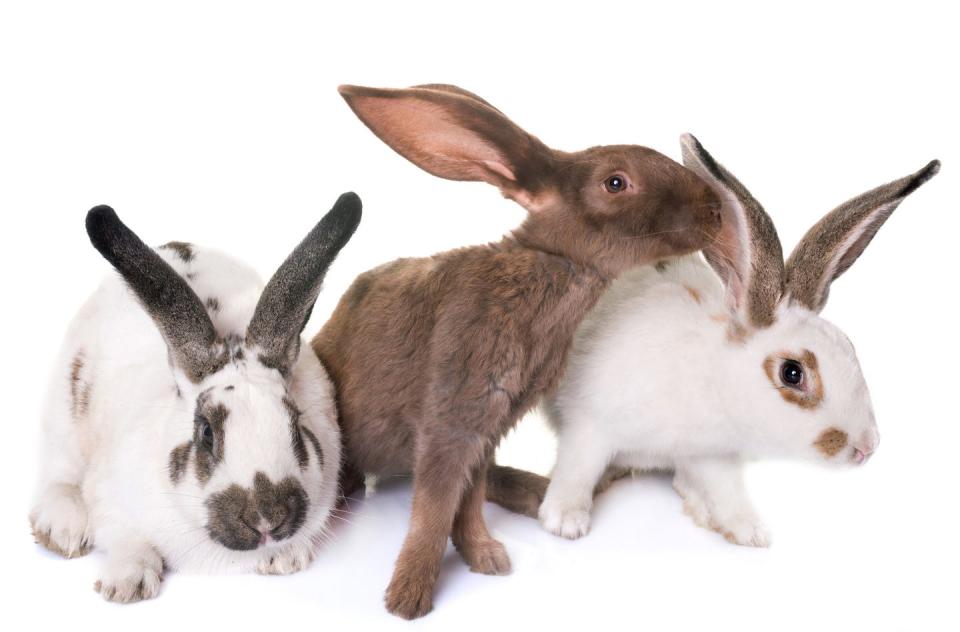
English Angora
This pleasingly pouffy puffball has a long, silky coat and is "the most popular Angora breed" of those recognized by the ARBA, according to Dr. Thompson. "Intelligent and playful, they love to interact but require significant grooming," she cautions. Angoras that aren't molting should be brushed/combed at least weekly.
Weighs 5-7.5 pounds
Abundant, fluffy coat with dense bangs
Compact body
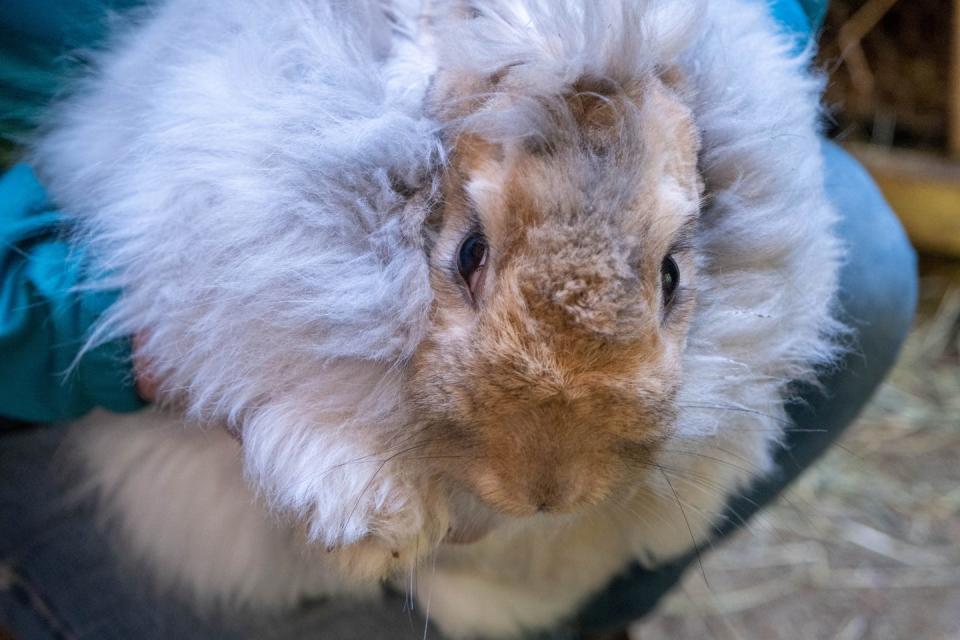
European Dwarf Angora
This small breed resulted from breeding Netherland dwarfs and angoras, according to Dr. Thompson, and is not currently recognized in the U.S. "They are more timid and need regular grooming," she says. "Dwarf bunnies (in general) tend to be more timid and not enjoy being held as much or may spook easily."
Weighs less than 3.5 pounds
Luxurious, long coat
The popular Jersey Wooly is a type of dwarf angora
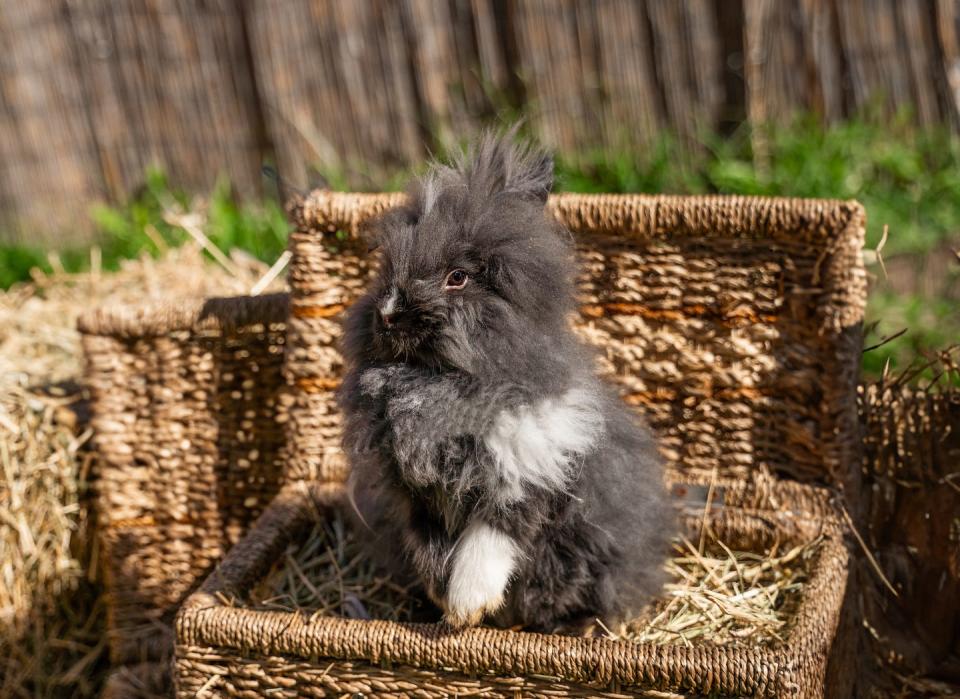
Havana
With a nickname like "The Mink of the Fancy," you know this bunny will have a lush and intensely-colored coat, and indeed it does. Called the Havana because the hue of its fur resembled the chocolate shade of the cigar, the breed initially appeared in Holland in 1898 before spreading to the United States. Havanas are affectionate to the point of loving a good snuggle and make wonderful family pets.
Weighs 4.5-6.5 pounds
Chocolate, blue, black, broken and lilac coats.
Compact body
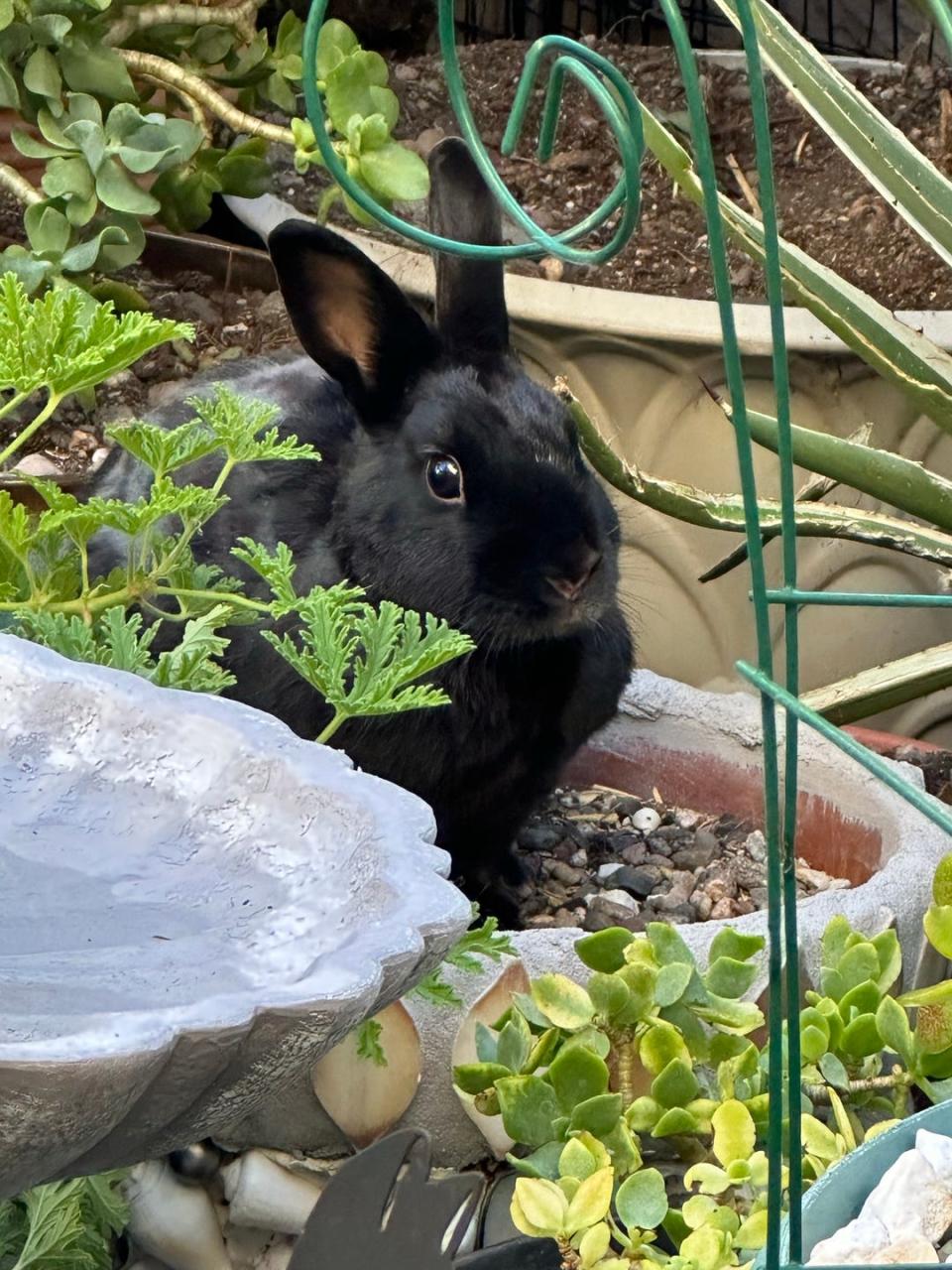
Mini Satin
Initially named the "satinette," this American bunny is the result of breeding satin, Polish and Netherland dwarfs. Dr. Dench calls them "delightful," adding, "They are relatively small, making them perfect for those who prefer a pet that requires less space. Mini satins are friendly and generally easy to handle, though their fine fur does require regular grooming to keep it in good condition."
Weighs 3 to 4.75 pounds
Coat available in 16 colors
Unique fur reflects light, giving it a satin-like sheen
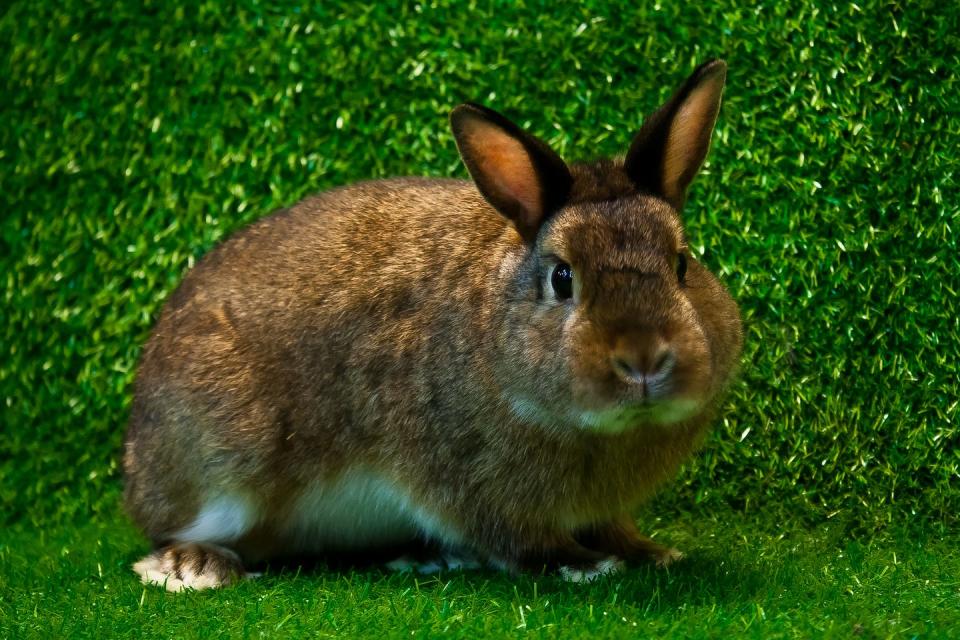
Lionhead
One of the breeds more recently recognized by the ARBA (in 2014), the lionhead is one showstopping bunny. While it's not known exactly where or how the lionhead was developed, Dr. Meijer notes "The Lionhead breed has one of the longest life spans of all rabbit breeds, typically around 7 to 9 years. Their name comes from the mane that they have, they can be single-maned or double-maned. They can be a bit more nervous, so if you have a busy household (with young children) then they might not be the ideal breed."
Weighs 2.5–3.75 pounds
Coat available in a wide variety of colors
Long, woolly fur with thick mane
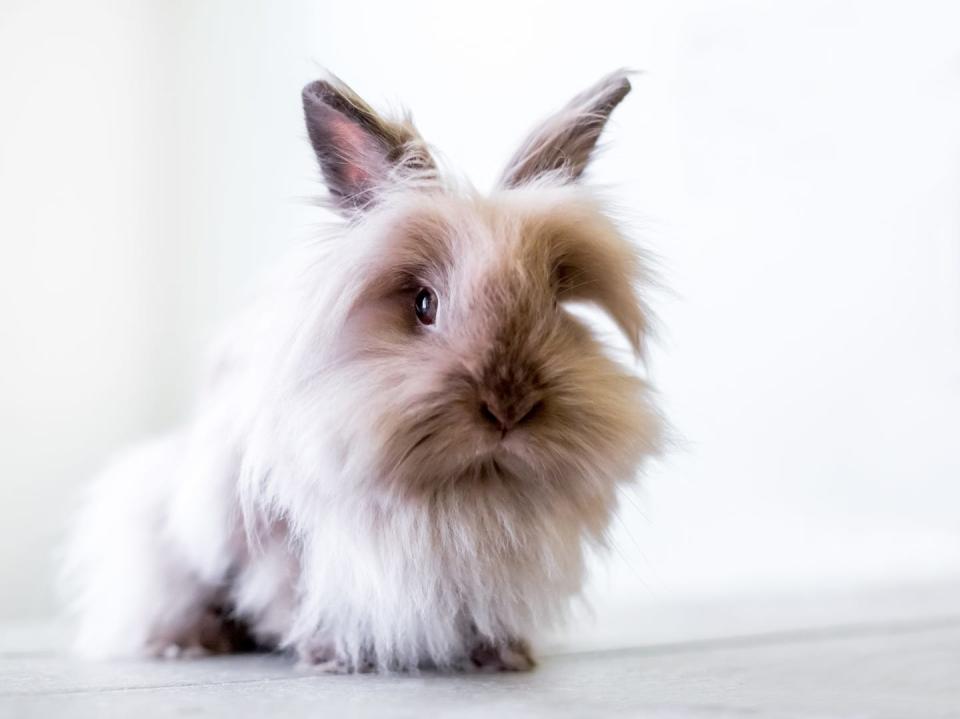
Dwarf Hotot
Developed in Germany, the mini-me version of the bigger blanc de Hotot bears the same striking black eye markings over white fur. Their small size (a result of their Netherland dwarf heritage) and generally good-hearted, affable personality ensure they're a fine choice for first-time bunny parents who would like an indoor companion. Nicknamed "The Eye of the Fancy," they are now available with striking blue eye rings.
Weighs less than 3 pounds
White coat with black or blue eye rings
Rounded body
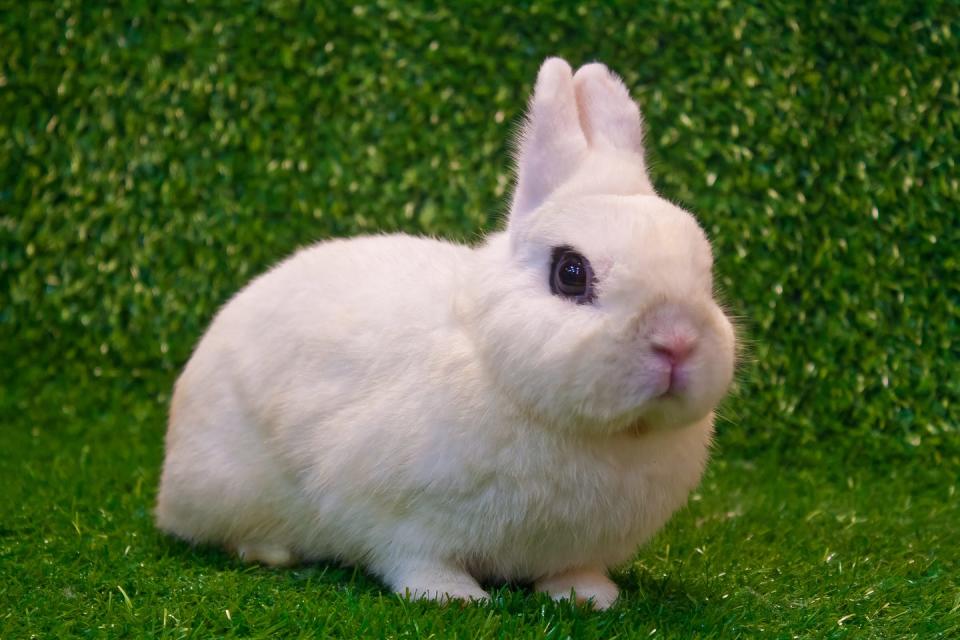
Rhinelander
With an arched posture and body more akin to a wild rabbit than a domesticated bunny, the Rhinelander was first bred in Germany in the early 20th century. Dr. Thompson calls them "medium-sized, with distinctive, mosaic markings. These social and athletic rabbits love to play and make excellent pets." They are still a relatively rare breed in the U.S., so finding one may be difficult.
Weighs 6.5 to 10 pounds
White coat with orange and black or fawn and blue markings
Cylindrical, arched body
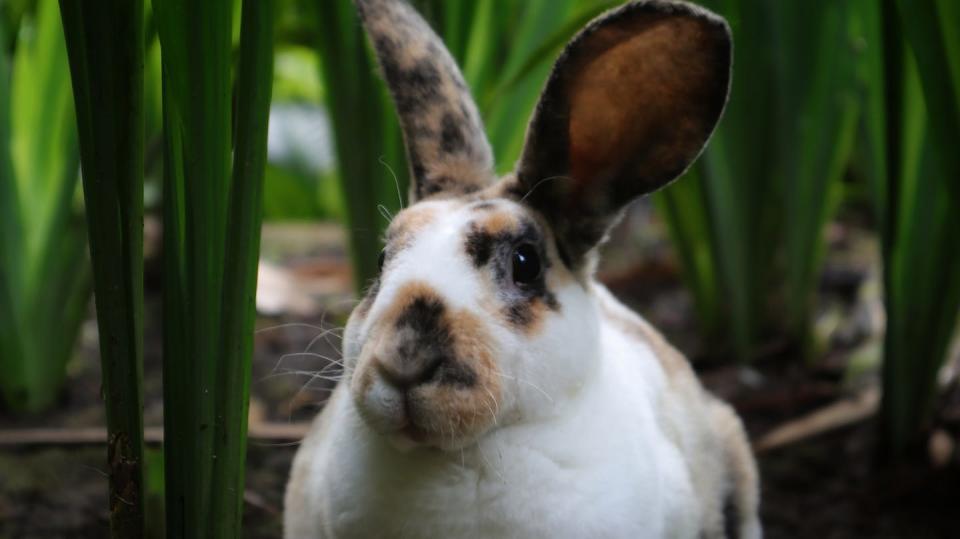
Mini Rex
Things may be bigger in Texas, but the mini rex—which came out of the Lone Star State in 1984—is a fun-sized version of the popular (and equally plush-coated) rex rabbit. "Recognizable by their velvety fur and small stature, mini rexes are sociable and enjoy human company," says Dr. Dench.
Weighs 3-4.5 pounds
Coat available in a wide variety of colors
Short, dense fur
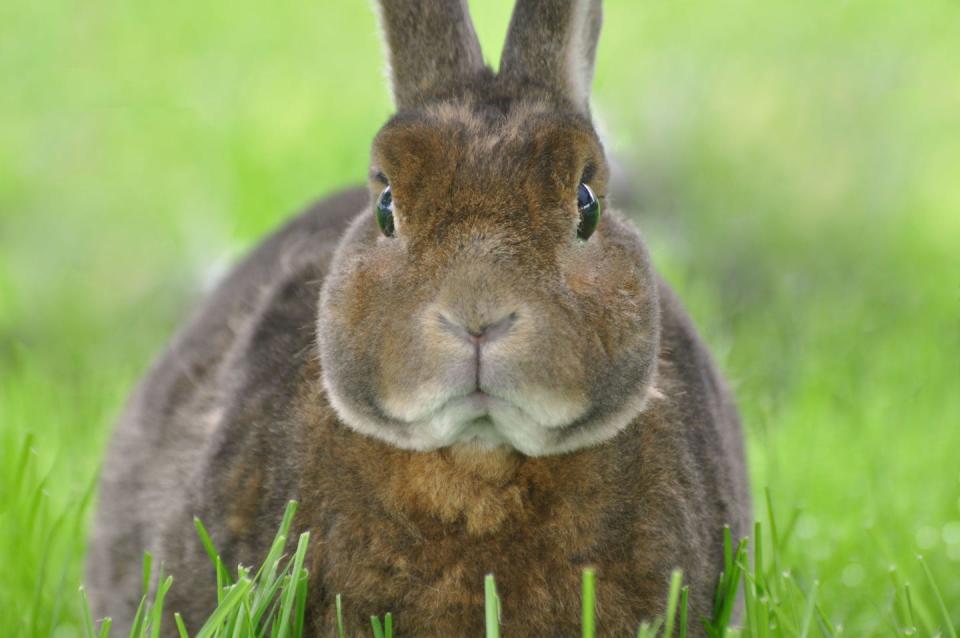
Harlequin
This French bunny is known for his "unique coat colors that resemble tortoiseshell cats," according to Dr. Thompson. First exhibited in Paris in the 1880s, the harlequin is available in the Japanese and magpie types. The former is orange- or fawn-colored with lilac, blue, black, or chocolate markings, while the latter is white with patterning possible in those same shades.
Weighs 6.5-9.5 pounds
White, orange, or fawn coat with lilac, blue, black, or chocolate markings
Coat typically has patches of two alternating colors
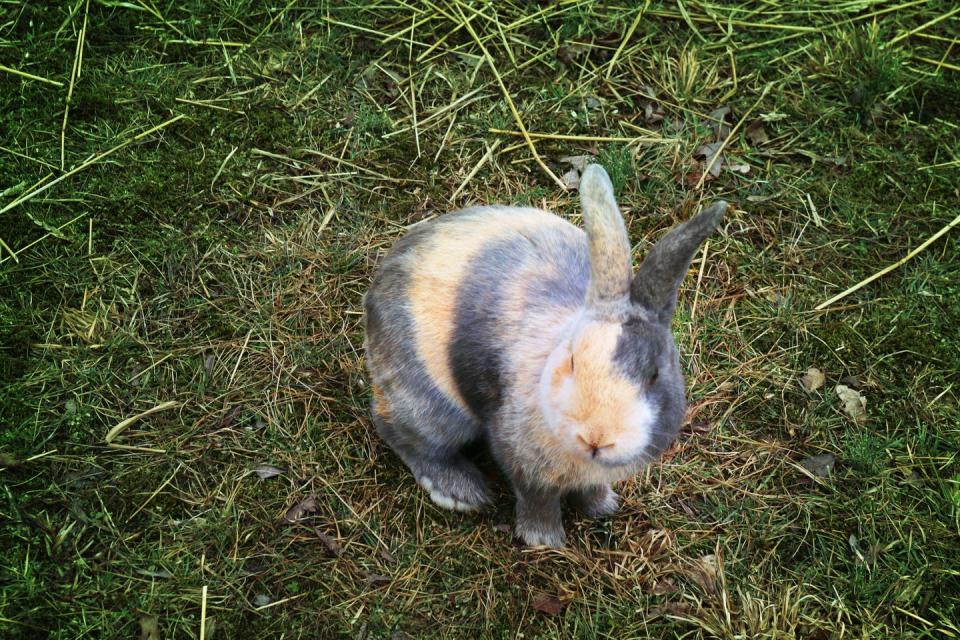
American Fuzzy Lop
Another ideal family pet thanks to his small body, adoring nature and mellow but playful disposition, the American fuzzy lop was recognized by the ARBA in 1989. Said to be the result of breeding the Holland lop, English spot and French angora rabbits, this long-haired bunny requires a bit of grooming, particuarly during molting season.
Weigh 3.5–4 pounds
Coat available in a wide variety of colors
Short, compct body and round head
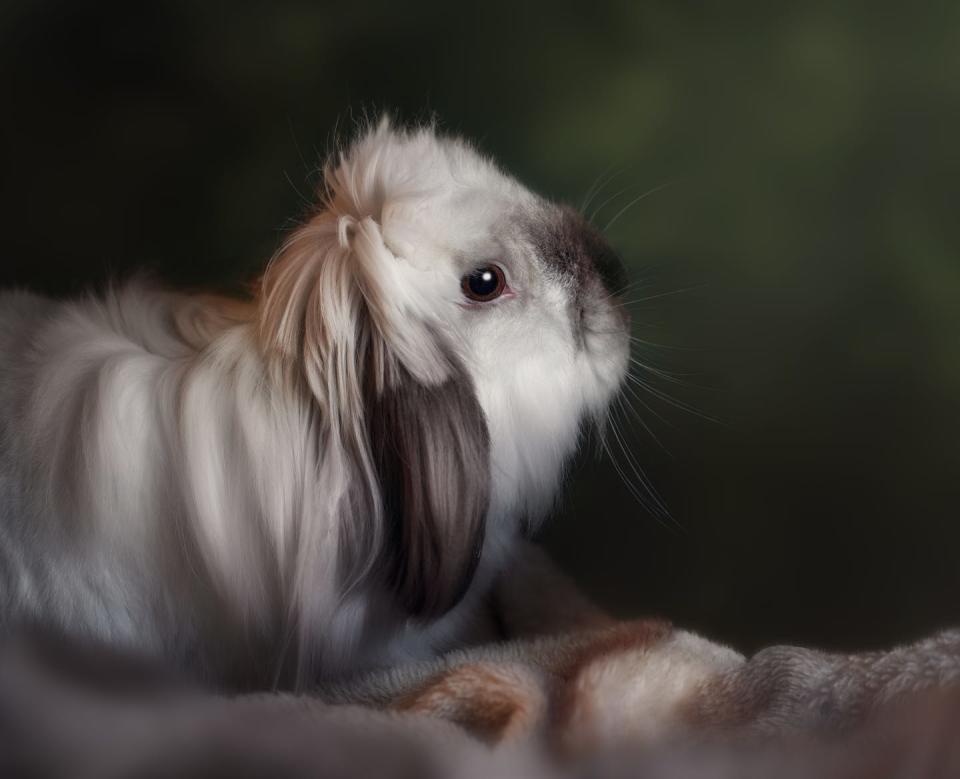
Netherland Dawrf
A bitty bunny first seen in the country for which it's named back in the early 20th century, the Netherland dwarf soon was making its home stateside. Since then, his popularity (and available coat colors) have only grown. "Small and energetic, these rabbits are playful and can be a bit more timid, requiring gentle handling," notes Dr. Dench.
Weighs less than 2.5 pounds
Coats available in 25 colors
Shy natured
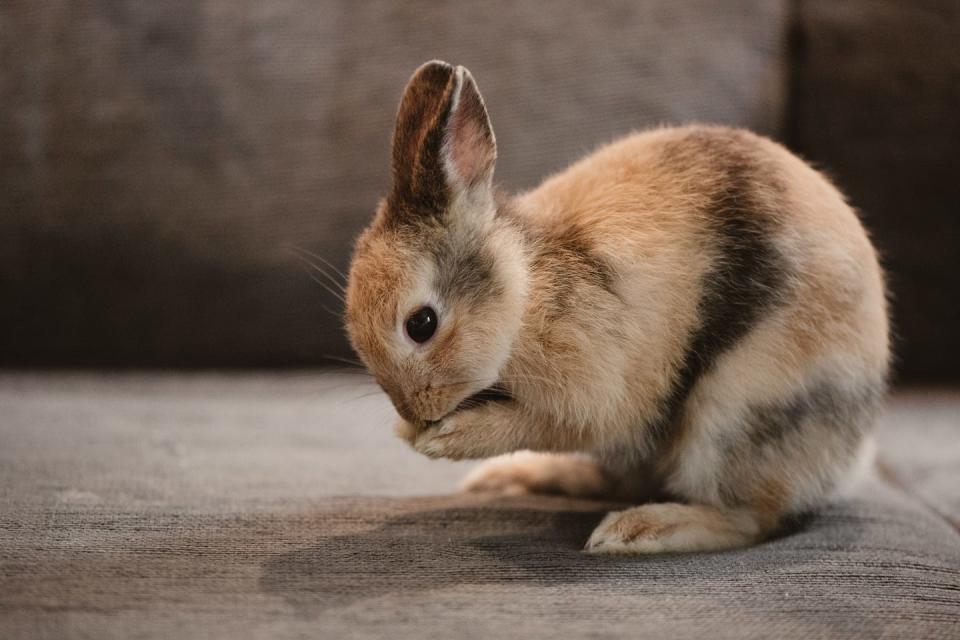
French Angora
Another angora breed with copious amounts of soft, gorgeous fur, the French angora rabbit has experienced a recent surge in popularity. That's probably due not just to his ability to produce angora, but also his relaxed nature. "They are sweet, docile rabbits that enjoy bouncing around the house or the backyard," says Dr. Thompson.
Weighs 7.5-10.5 pounds
Coats available in a wide variety of colors
Does not produce wool on head, face, ears, or front feet
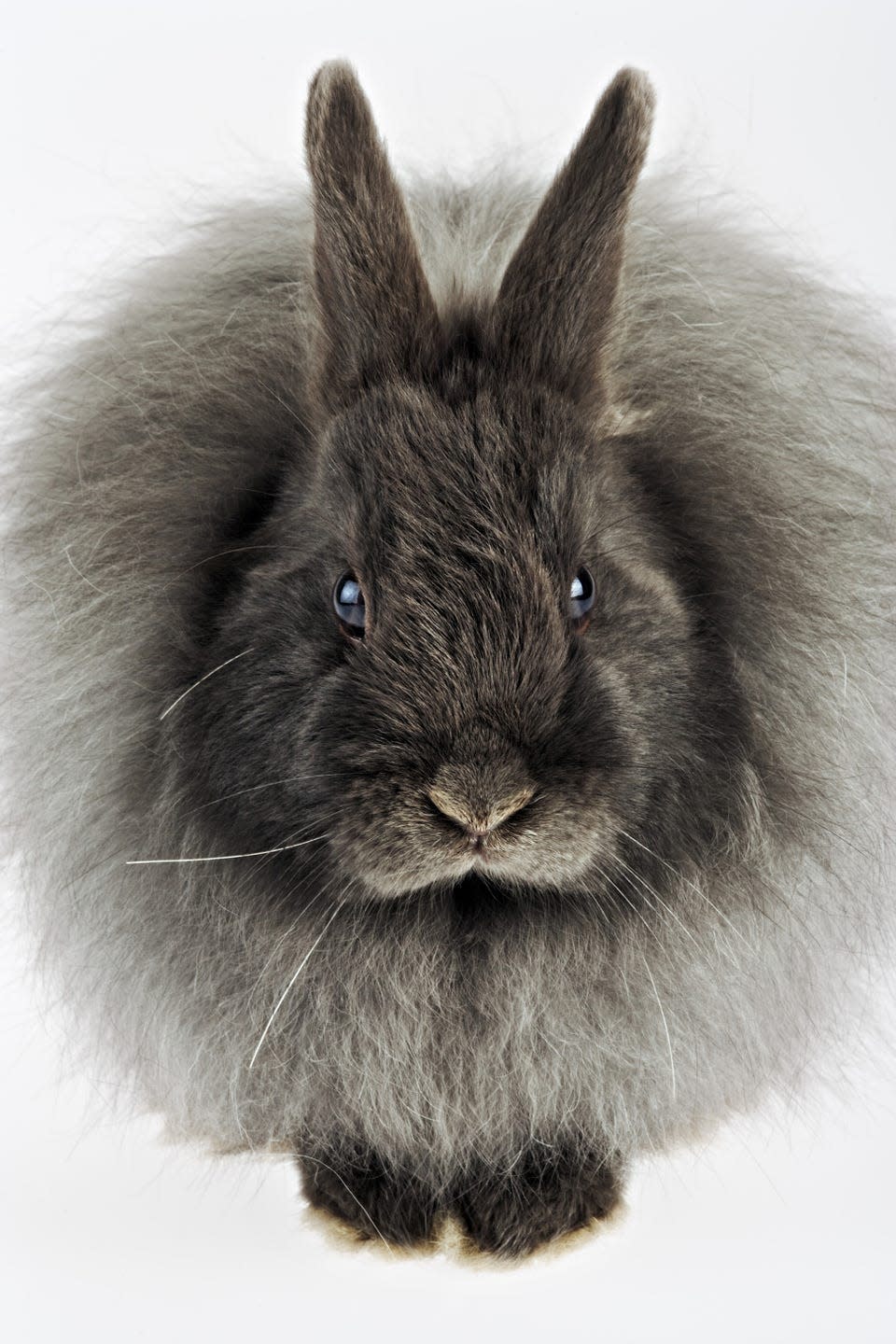
Giant Chinchilla
The rare giant chinchilla also goes by the name "The Million Dollar Rabbit" because his originator was the first person to ever make that much money from selling his bunny breeding stock. This American breed, which counts both white Flemish giants and chinchilla rabbits in its gene pool, made its debut in 1921. Despite his size, the gentle giant chinchilla is a lover not a fighter, though potential parents should note his extremely dense coat needs regular brushing.
Weighs 12-16 pounds
Complex coat color that includes bands of dark slate blue, black, pearl, and white
Semi-arched body
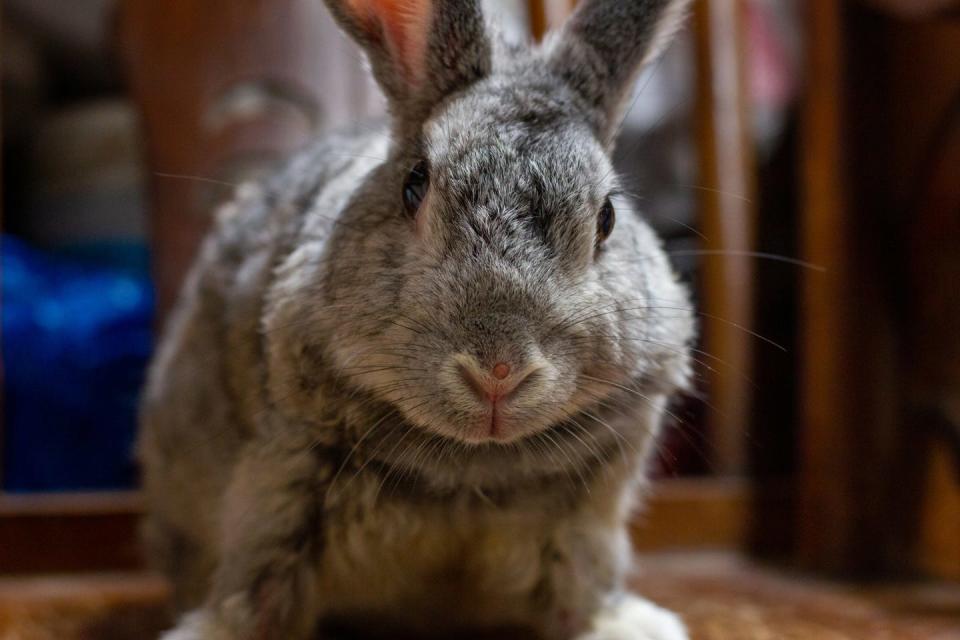
French Lop
This big bunny is believed to be the result of breeding the English lop with the giant pappillon back in the 1800s. Weighing in at least 10 pounds, the French lop is muscular and big-boned, with a wide head, and "is calm and can be easily handled, (so it's) suitable for children," says Dr. Dench.
Weighs at least 10 pounds
Coat available in a wide variety of colors
Shorter ears than English lop
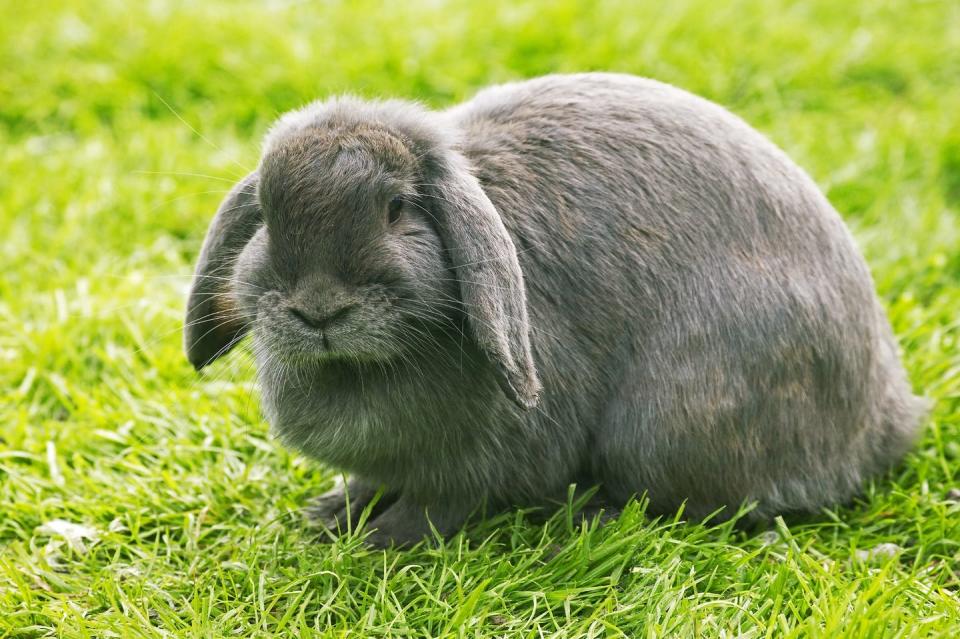
Mini Lop
Brought to the U.S. in the 1970s, the mini lop is surprisingly stocky, with a softball-sized noggin, and is decidedly bigger than the Holland lop. Dr. Dench calls the breed "friendly and adaptable, making it ideal for families."
Weighs 4.5-6.5 pounds
Coat available in a wide variety of colors
Thick-set, muscled body
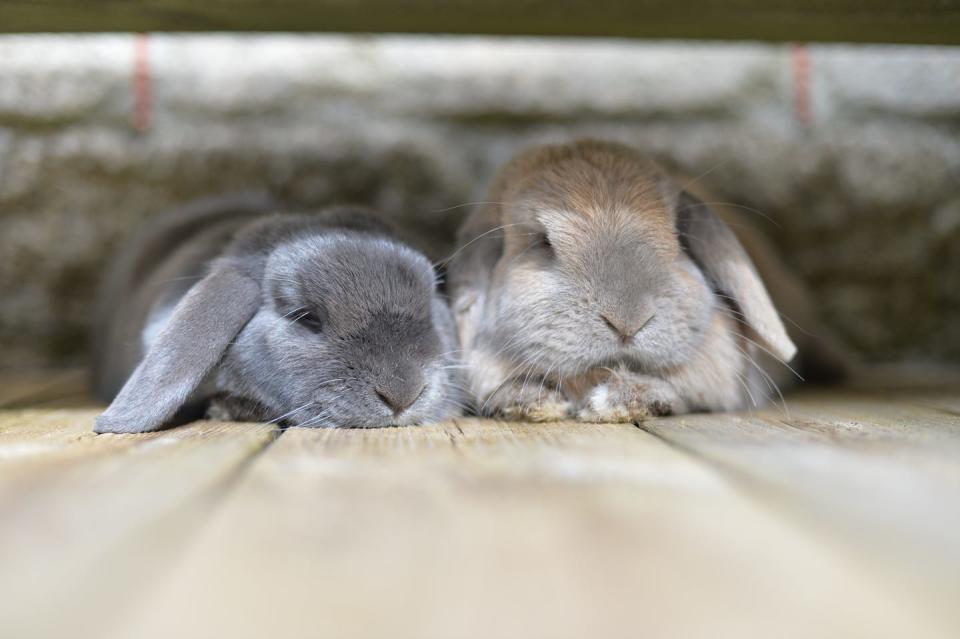
You Might Also Like


